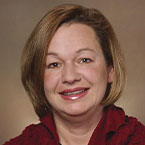By: Sanjeev Jain, MD, FAAP & Maya Bunik, MD, MPH, FAAP
One of the most common questions new parents have is how often their baby should eat. The best answer is surprisingly simple: in general, babies should be fed whenever they seem hungry.
How do I know when my baby is hungry?
For babies born
prematurely or with certain medical conditions, scheduled feedings advised by your pediatrician are best. But for most healthy, full-term infants, parents can look to their baby rather than the clock for hunger cues. This is called feeding on demand, or
responsive feeding.
Hunger cues
A hungry baby often will cry. But it's best to watch for hunger cues before the baby starts
crying, which is a late sign of hunger and can make it hard for them to settle down and eat.
Some other typical hunger cues in babies:
Licking lips
Sticking tongue out
Rooting (moving jaw and mouth or head in search of breast)
Putting their hand to their mouth repeatedly
Opening their mouth
Fussiness
Sucking on everything around
It is important to realize, however, that every time your baby cries or sucks it is not necessarily because they are hungry. Babies suck not only for hunger, but also for comfort; it can be hard at first for parents to tell the difference. Sometimes, your baby just needs to be cuddled or changed.
General guidelines for baby feeding
Keep in mind that all babies are different. Some like to snack more often, and others drink more at one time and go longer between feedings.
An infant's stomach is the size of an egg, so they can more easily tolerate smaller frequent feedings. However, most babies will drink more and go longer between feedings as they get bigger and their tummies can hold more milk.
Breastfed babies
Breastfed newborns usually nurse every 2 hours from the start of the feeding to the next feeding so 10-12 sessions in 24 hours is the norm. Over time the feedings space out but this is a slow process.
Most breastfed infants take 1 oz in the first few weeks, an amount that slowly increases over time. It tops out at rougly 4.5 oz at a year of age.
At times, breastfed infants can take in more if a nursing parent has an oversupply of milk. These infants may spit up, show signs of fussiness and increased stools.
Bottle-fed babies
If bottle-fed, most
newborns eat every 2 to 3 hours; 8 times is generally recommended as the minimum every 24 hours. Babies might only take in half ounce per feeding for the first day or two of life, but after that will usually drink 1 to 2 ounces at each feeding.
By the end of the first month, most babies consume at least 3 or 4 ounces per feeding, about every 3 to 4 hours. By 6 months old, they may take in 6 to 8 ounces at each of 4 or 5 feedings in 24 hours. Also at about 6 months old, solid foods should start to be added to a baby's diet.
Concerns about overfeeding or underfeeding your baby
Too full?
Infants who are
bottle feeding may be more likely to overfeed, because drinking from a bottle is faster and may take less effort than
breastfeeding. Infants may not pull away or raise their hands and indicate that they are full, and may keep sucking.
Overfed babies can have stomach pains, gas,
spit up or vomit and be at higher risk for obesity later in life. It's better to offer less, since you can always give more if your baby wants it. Babies often cry with transitions—taking the bottle away or stopping breastfeeding—so pausing can be helpful to give them a chance to realize when they're full.
If you are concerned your baby wants to eat
all the time―even when they are full―talk with your pediatrician.
Pacifiers may be used after feeding to help sooth healthy-weight babies who like to suck for comfort, rather than nutrition. For babies who are breastfed, it's best to wait to offer pacifiers until around 3 to 4 weeks of age, when breastfeeding is well-established.
How do I know if my baby is getting enough to eat?
Daily diapers
A newborn's
diaper is a good indicator of whether they are getting enough to eat. In the first few days after birth, a baby should have 2 to 3 wet diapers each day. After the first 4 to 5 days, a baby should have at least 5 to 6 wet diapers a day.
Stool (poop) frequency varies more. However, by the fourth day your baby should be having at least 4 stools a day. The exact number depends whether they are breastfed or formula-fed.
Growth charts
During regular health check-ups, your pediatrician will check your baby's weight and plot it on a
growth chart. Your baby's progress on the growth chart is one way to tell whether or not they are getting enough food. Babies who stay in healthy growth percentile ranges are
probably getting a healthy amount of food during feedings.
Trouble gaining weight?
Babies born even a little early can be sleepy and may not take in enough in the early weeks. They should be followed closely to be sure they are growing on their growth curve. If your baby is having trouble gaining weight, don't wait too long between feeding―even if it means waking your baby.
Be sure to talk with your pediatrician about how often and how much to feed your baby, or if you have any questions or concerns about your baby's health and nutrition.
More information
About Dr. Jain
 Sanjeev Jain, MD, FAAP, is a Clinical Associate Professor of General Pediatrics and Adolescent Medicine at the University of Wisconsin School of Medicine and Public Health. Within the American Academy of Pediatrics, he is a member of the Section on International Child Health and the Wisconsin State Chapter.
Sanjeev Jain, MD, FAAP, is a Clinical Associate Professor of General Pediatrics and Adolescent Medicine at the University of Wisconsin School of Medicine and Public Health. Within the American Academy of Pediatrics, he is a member of the Section on International Child Health and the Wisconsin State Chapter.
|
About Dr. Bunik
 Maya Bunik, MD, MPH, FAAP, is a Professor of Pediatrics at University of Colorado Denver School of Medicine and Associate Chief Medical Officer of Ambulatory care at Children's Hospital Colorado. Dr. Bunik is Chair of the American Academy of Pediatrics (AAP) Section on Breastfeeding and author of the AAP book,
Breastfeeding Telephone Triage and Advice, which is distributed to U.S. hospitals as part of the WHO Baby Friendly Health Initiative.
Maya Bunik, MD, MPH, FAAP, is a Professor of Pediatrics at University of Colorado Denver School of Medicine and Associate Chief Medical Officer of Ambulatory care at Children's Hospital Colorado. Dr. Bunik is Chair of the American Academy of Pediatrics (AAP) Section on Breastfeeding and author of the AAP book,
Breastfeeding Telephone Triage and Advice, which is distributed to U.S. hospitals as part of the WHO Baby Friendly Health Initiative.
|